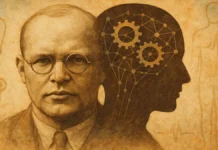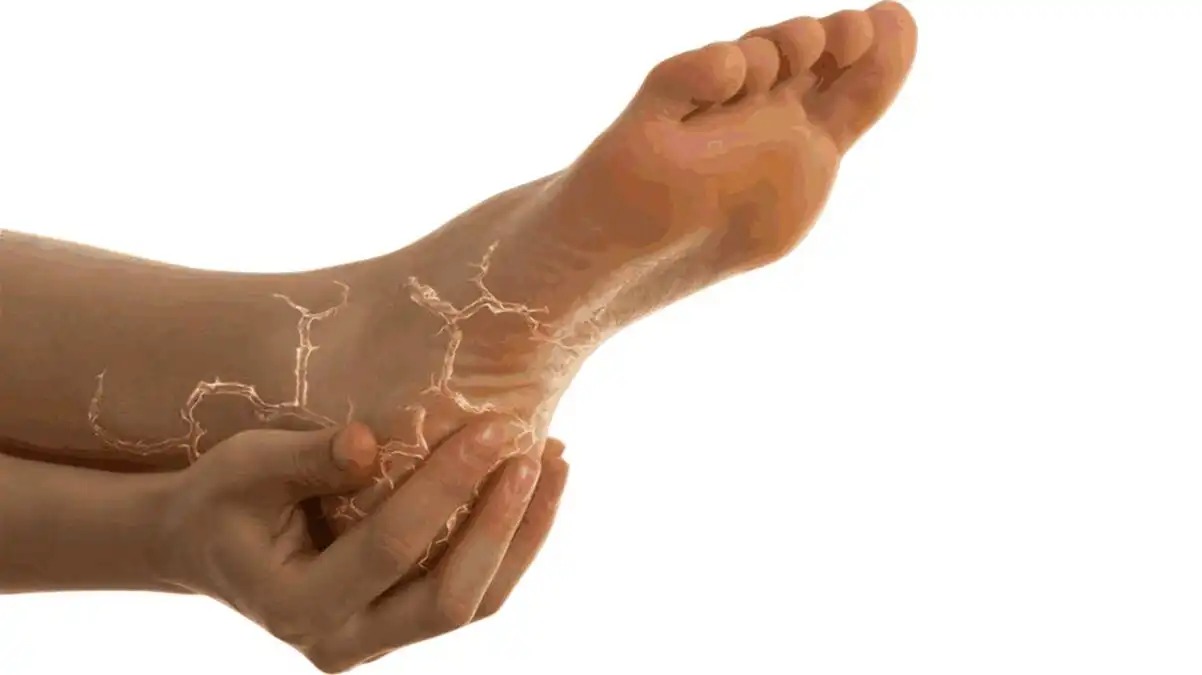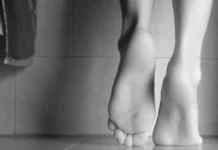Introduction to the Mulligan Concept
The Mulligan Concept, developed by New Zealand physiotherapist Brian Mulligan, represents a revolutionary approach to manual therapy, blending the principles of mobilization with movement. This technique, which has gained global recognition, emphasizes patient-centered care, combining hands-on techniques with active patient participation to achieve immediate and lasting results. Mulligan’s approach challenges traditional methods by introducing a dynamic way to address musculoskeletal pain and dysfunction, offering a unique perspective that has transformed the field of manual therapy.
Understanding Mobilization with Movement
At the core of the Mulligan Concept is the principle of Mobilization with Movement (MWM). Unlike traditional passive mobilization techniques, MWM involves the therapist applying a gentle, sustained force to a joint while the patient simultaneously performs a specific movement. This dual action aims to restore the normal, pain-free motion of the joint by correcting positional faults or movement restrictions.
What sets MWM apart is its focus on the immediate relief of symptoms. The technique is designed to be pain-free, and if the patient experiences discomfort during the movement, the approach is modified until a pain-free range is achieved. This patient-centered approach not only enhances the effectiveness of the treatment but also empowers the patient, as they actively participate in their own recovery process.
MWM is applicable to a wide range of conditions, including joint stiffness, muscle tightness, and even certain types of nerve entrapments. The technique is particularly effective in addressing chronic pain conditions where other treatments may have failed. By incorporating movement into the mobilization process, MWM helps retrain the nervous system, promoting more efficient and coordinated movements, which can lead to longer-lasting improvements in function and pain relief.
The Legacy of Brian Mulligan in Manual Therapy
Brian Mulligan’s contributions to manual therapy extend far beyond the development of the MWM technique. With over 50 years of experience as a physiotherapist, Mulligan’s work has profoundly influenced how therapists approach the treatment of musculoskeletal disorders. His methods are taught in over 50 countries, and his books and courses have become essential resources for therapists seeking to enhance their skills.
Mulligan’s legacy is built on innovation and a commitment to improving patient outcomes. His techniques are characterized by their simplicity and effectiveness, making them accessible to practitioners at all levels of experience. Mulligan emphasized the importance of continuous learning and adapting to new evidence, a philosophy that continues to inspire therapists worldwide.
The impact of Mulligan’s work can be seen in the countless patients who have experienced relief from chronic pain and improved quality of life through his techniques. His dedication to advancing the field of manual therapy has left an indelible mark, ensuring that his methods will continue to benefit both therapists and patients for generations to come.
What is the Mulligan Bent Leg Raise Technique?
The Mulligan Bent Leg Raise (BLR) Technique is a specialized manual therapy method designed to address issues related to hamstring tightness and lower back pain. Developed as part of the broader Mulligan Concept, the BLR technique is particularly effective in improving flexibility and reducing discomfort in the posterior chain of muscles. It stands out for its immediate, pain-free results, aligning with the core principles of Mobilization with Movement (MWM) that characterize Brian Mulligan’s approach to manual therapy.
Detailed Overview of the BLR Technique
The Bent Leg Raise technique specifically targets the hamstring muscles, which can often become tight due to factors such as prolonged sitting, poor posture, or previous injuries. This tightness can lead to discomfort or pain in the lower back, pelvis, and even the legs, impacting overall mobility and quality of life.
The BLR technique involves a combination of passive and active movements designed to mobilize the hamstring muscles and associated joints. The patient typically lies on their back with one leg bent at the knee and hip, creating a 90-degree angle. This position isolates the hamstring, allowing the therapist to focus on stretching and mobilizing this specific muscle group.
The therapist then applies a gentle, sustained force to the bent leg, guiding it into a more extended position while maintaining control over the movement. This mobilization is performed in a way that ensures the patient remains pain-free throughout the process. The movement is repeated several times, with the therapist adjusting the force and angle as needed to maximize the stretch and reduce tension in the hamstrings.
Key Movements and Therapist’s Role
In the Mulligan Bent Leg Raise Technique, the therapist plays a crucial role in ensuring the effectiveness and safety of the procedure. The key movements involve a combination of therapist-applied force and patient-assisted motion, working together to mobilize the hamstrings and related joints.
- Therapist’s Hand Placement: The therapist typically positions one hand on the patient’s knee to stabilize the joint, while the other hand is placed under the patient’s heel or calf. This hand placement allows the therapist to control the leg’s movement and apply the necessary force to stretch the hamstrings effectively.
- Guided Movement: As the patient slowly extends the leg, the therapist guides the motion, ensuring that it remains within a pain-free range. The therapist may use subtle adjustments to the angle or direction of the movement to target specific areas of tightness or discomfort.
- Repetition and Feedback: The movement is typically repeated multiple times, with the therapist closely monitoring the patient’s response. Any discomfort or resistance is addressed immediately, often by modifying the technique or adjusting the applied force. Patient feedback is crucial in fine-tuning the procedure to achieve the best possible outcome.
The BLR technique is particularly beneficial because it not only stretches the hamstrings but also helps retrain the nervous system to allow for greater flexibility and range of motion. The immediate feedback from the patient and the active involvement in the movement are key elements that contribute to the success of this technique, making it a valuable tool in the manual therapist’s repertoire.
Why Use the Bent Leg Raise?
The Bent Leg Raise (BLR) Technique, a specialized method within the Mulligan Concept, offers a targeted approach for managing common musculoskeletal issues, particularly hamstring tightness and lower back pain. This technique’s effectiveness lies in its unique combination of mobilization with movement (MWM), which directly addresses these conditions by integrating patient participation into the therapeutic process.
Common Indications and Conditions
The BLR Technique is particularly useful for several conditions, primarily those related to the posterior chain of muscles. Common indications include:
- Hamstring Tightness: Often resulting from prolonged sitting, poor posture, or previous injuries, tight hamstrings can restrict mobility and lead to discomfort. This tightness frequently contributes to lower back pain, as the hamstrings play a crucial role in pelvic positioning and spinal alignment.
- Lower Back Pain: The interconnectedness of the posterior chain means that tight hamstrings can pull on the pelvis, causing undue stress on the lower back. This can lead to pain and stiffness in the lumbar region, affecting overall mobility and quality of life.
- Sciatica: The technique can be beneficial for individuals experiencing sciatica, where irritation or compression of the sciatic nerve causes pain radiating down the leg. By addressing hamstring tightness, the BLR Technique can help alleviate some of the pressure on the lower back and sciatic nerve.
- Reduced Flexibility and Mobility: Limited hamstring flexibility can impact daily activities, from simple tasks like bending over to more complex movements. The BLR Technique helps improve range of motion and flexibility, enhancing overall functional ability.
How the BLR Technique Targets Hamstring Tightness and Lower Back Pain
The BLR Technique’s design effectively addresses hamstring tightness and associated lower back pain through a series of precise steps that integrate both therapist-guided and patient-assisted movements. Here’s how it works:
- Targeted Mobilization: The technique begins with the patient lying on their back, one leg bent at the knee and hip to form a 90-degree angle. This position isolates the hamstrings, allowing the therapist to apply a controlled, gentle force to the bent leg. This mobilization helps stretch the hamstring muscles and relieve tension.
- Active Participation: As the patient actively extends their leg, the therapist guides the movement while applying sustained force. This simultaneous application of pressure and movement helps address positional faults and movement restrictions, promoting a pain-free range of motion.
- Pain-Free Approach: The BLR Technique is designed to be performed without causing discomfort. If the patient experiences any pain, the therapist adjusts the force or movement to ensure the technique remains within a pain-free range. This patient-centered approach not only enhances comfort but also improves the effectiveness of the treatment.
- Immediate Results: One of the key benefits of the BLR Technique is its ability to provide immediate relief. The technique’s focus on real-time feedback allows for quick adjustments and immediate results, making it particularly effective for addressing acute and chronic issues.
- Retraining the Nervous System: By integrating movement with mobilization, the BLR Technique helps retrain the nervous system. This retraining promotes more coordinated and efficient movements, contributing to longer-lasting improvements in flexibility and pain relief.
The Science Behind the Bent Leg Raise Technique
The Bent Leg Raise (BLR) Technique, a key component of the Mulligan Concept, is rooted in evidence-based principles and a nuanced understanding of musculoskeletal mechanics. This technique’s efficacy in treating hamstring tightness and lower back pain is supported by both clinical research and biomechanical theories. Here, we explore the scientific basis behind the BLR Technique, focusing on the evidence supporting its benefits and the mechanisms that contribute to its effectiveness.
Evidence-Based Benefits: What Research Says
Research on the Mulligan Concept and its various techniques, including the BLR Technique, highlights its effectiveness in managing musculoskeletal conditions. Studies have demonstrated several key benefits:
- Improved Range of Motion: A study by Mulligan and his colleagues (1998) examined the effects of mobilization with movement techniques on range of motion in patients with various musculoskeletal disorders. The results showed significant improvements in joint mobility and flexibility, consistent with the benefits reported by practitioners of the BLR Technique.
- Pain Relief: Research has indicated that MWM techniques, including the BLR, can provide immediate and sustained pain relief. For instance, a randomized controlled trial by Sterling et al. (2006) found that patients with acute low back pain experienced significant reductions in pain and disability following MWM interventions. This aligns with the BLR Technique’s ability to alleviate lower back pain by targeting associated hamstring tightness.
- Functional Improvement: Evidence supports that techniques like the BLR not only relieve symptoms but also enhance functional outcomes. A study by Korthals-de Bos et al. (2003) demonstrated that patients receiving manual therapy, including mobilization techniques, showed improvements in functional performance and quality of life. This supports the BLR Technique’s role in improving overall mobility and daily function.
- Long-Term Benefits: The enduring impact of MWM techniques on pain and function has been highlighted in long-term studies. For example, a follow-up study by Mullaney et al. (2010) indicated that patients who received MWM treatment experienced lasting improvements in mobility and pain management, reinforcing the BLR Technique’s potential for long-term benefits.
Mechanisms of Action: How the BLR Technique Works
The effectiveness of the BLR Technique is grounded in its mechanistic principles, which involve a combination of biomechanical and neurophysiological factors:
- Biomechanical Realignment: The BLR Technique focuses on the hamstrings, which are crucial for maintaining proper pelvic alignment and spinal posture. By applying a gentle, sustained force to the bent leg while the patient actively extends the leg, the technique addresses positional faults and muscle tightness. This mobilization helps restore optimal alignment and reduces mechanical stress on the lower back, alleviating pain and improving function.
- Neurophysiological Modulation: The technique’s integration of movement with mobilization influences the nervous system’s response. By engaging the patient in active movement during the mobilization process, the BLR Technique promotes proprioceptive feedback and neuromuscular coordination. This helps retrain the nervous system to support more efficient and coordinated movements, contributing to pain relief and improved functional outcomes.
- Pain-Free Movement: The BLR Technique is designed to be pain-free, which is crucial for its effectiveness. The technique’s focus on maintaining a pain-free range of motion prevents the activation of pain pathways and allows for the effective mobilization of tight muscles and joints. This approach minimizes discomfort and facilitates the therapeutic process, leading to better patient outcomes.
- Muscle Lengthening and Stretching: The passive component of the BLR Technique involves stretching the hamstring muscles, which can become tight due to various factors such as poor posture or prolonged sitting. By applying a controlled force to the bent leg, the technique helps lengthen the hamstrings, reducing muscle tension and associated pain. This stretching effect is crucial for improving flexibility and relieving lower back discomfort.
- Enhanced Joint Mobility: The technique’s focus on mobilizing the hamstrings and associated joints contributes to improved joint mobility. By addressing restrictions and positional faults, the BLR Technique helps restore normal joint function and range of motion. This enhanced mobility is beneficial for patients experiencing stiffness and limited movement due to tight muscles or joint dysfunction.
Step-by-Step Guide to Performing the Bent Leg Raise Technique
The Bent Leg Raise (BLR) Technique is an effective manual therapy method for addressing hamstring tightness and lower back pain. Proper execution of this technique is crucial for achieving optimal results and ensuring patient comfort. Below is a detailed step-by-step guide to performing the BLR Technique, including patient positioning, therapist’s hands-on approach, and tips for maximizing effectiveness.
Patient Positioning: Preparing for Success
- Patient Preparation:
- Explain the Procedure: Before starting, explain the BLR Technique to the patient, including its purpose and what to expect. Address any concerns or questions they may have to ensure they are comfortable and relaxed.
- Positioning: Have the patient lie supine (on their back) on a treatment table or firm surface. Ensure they are comfortable and properly supported. A cushion or rolled towel under the knees may be used for added comfort if needed.
- Leg Positioning:
- Bend the Knee: Instruct the patient to bend one leg at the knee and hip, creating a 90-degree angle. The opposite leg should remain extended or relaxed.
- Foot Placement: Ensure the patient’s foot is positioned flat on the table. The bent leg should be positioned in such a way that the therapist has clear access to apply force and guide the movement.
Therapist’s Hands-on Approach: Step-by-Step Instructions
- Initial Assessment:
- Evaluate Range of Motion: Before applying the technique, assess the patient’s current range of motion and any areas of tightness or discomfort. This will help tailor the technique to the patient’s specific needs.
- Check for Pain or Discomfort: Ensure that the patient is not experiencing any severe pain or discomfort in the initial position. Adjust positioning or the technique as needed.
- Hand Placement and Force Application:
- Stabilize the Leg: Place one hand on the patient’s knee to stabilize the joint and prevent unnecessary movement. This helps maintain proper alignment during the technique.
- Apply Gentle Force: With your other hand, grasp the patient’s heel or calf. Apply a gentle, sustained force to guide the leg into a more extended position while maintaining control. Ensure that the force applied is sufficient to stretch the hamstring without causing pain.
- Guided Movement:
- Initiate the Movement: As the patient actively extends their leg, guide the movement with your hands, making sure it stays within a pain-free range. The therapist’s hand should provide enough force to stretch the hamstring muscles while the patient assists by moving their leg.
- Monitor and Adjust: Continuously monitor the patient’s response to the technique. If they experience any discomfort, adjust the applied force or angle of movement to ensure that the procedure remains pain-free. Make necessary modifications to the technique based on the patient’s feedback.
- Repetition and Progression:
- Perform Repetitions: Repeat the movement several times, typically 6-10 repetitions per session. The number of repetitions may vary based on the patient’s response and progress.
- Adjust as Needed: Based on the patient’s feedback and progress, adjust the technique as needed to maximize the stretch and effectiveness. Gradually increase the range of motion as the patient’s flexibility improves.
Tips for Maximizing Effectiveness
- Ensure Proper Communication:
- Engage with the Patient: Maintain open communication with the patient throughout the procedure. Encourage them to provide feedback on their comfort level and any sensations they experience. This feedback is crucial for making real-time adjustments and ensuring a positive outcome.
- Maintain a Pain-Free Approach:
- Prioritize Comfort: The BLR Technique should always be performed within a pain-free range. Avoid pushing the patient into any position or movement that causes discomfort. A pain-free approach enhances the effectiveness of the technique and promotes better patient compliance.
- Be Attentive to Biomechanics:
- Proper Hand Placement: Ensure that your hand placement provides optimal control and support. Stabilizing the knee and applying force through the heel or calf helps achieve the desired stretch and mobilization of the hamstrings.
- Adjust Angles: Be prepared to adjust the angle of movement and the direction of applied force based on the patient’s specific needs and response. Tailoring the technique to the individual can improve outcomes and effectiveness.
- Integrate Patient Education:
- Teach Self-Care: Educate the patient on maintaining flexibility and avoiding activities that may exacerbate tightness. Provide guidance on complementary stretches or exercises they can perform at home to support the results of the BLR Technique.
- Monitor Progress:
- Track Improvements: Regularly assess the patient’s progress and adjust the technique as necessary. Documenting changes in range of motion, pain levels, and functional abilities can help track effectiveness and guide future treatments.
Clinical Applications and Real-Life Success Stories
The Bent Leg Raise (BLR) Technique, an integral part of the Mulligan Concept, has demonstrated its efficacy in treating various musculoskeletal issues. This section explores real-life success stories showcasing its impact, including a case study on chronic hamstring tightness and another on sciatica. Additionally, insights from clinical practice highlight strategies for optimizing the technique’s effectiveness.
Case Study 1: Overcoming Chronic Hamstring Tightness
Patient Background:
Sarah, a 42-year-old office worker, had been experiencing chronic hamstring tightness for over two years. Her condition was exacerbated by prolonged sitting and poor posture, leading to persistent discomfort and reduced flexibility. Despite various treatments, including stretching exercises and physical therapy, Sarah’s symptoms persisted.
Application of the BLR Technique:
Upon assessment, Sarah was positioned supine on the treatment table with one leg bent at the knee and hip. The therapist began by applying gentle, sustained force to her bent leg while guiding her through controlled movements. The focus was on maintaining a pain-free range and adjusting the force as needed to maximize the stretch.
Results:
After a series of sessions using the BLR Technique, Sarah reported significant improvements in her hamstring flexibility and a substantial reduction in discomfort. The technique’s immediate and pain-free approach allowed for effective muscle stretching, which alleviated the tightness that had been hindering her daily activities. Sarah’s increased range of motion and reduced symptoms were evident, demonstrating the BLR Technique’s efficacy in addressing chronic muscle tightness.
Case Study 2: Rapid Relief from Sciatica
Patient Background:
John, a 55-year-old carpenter, presented with sciatica symptoms, including lower back pain and radiating discomfort down his left leg. The pain was exacerbated by tightness in his hamstrings, which had limited his mobility and affected his work performance. John sought relief from his symptoms, which had not responded well to conventional treatments.
Application of the BLR Technique:
John was positioned with his left leg bent at the knee and hip. The therapist used the BLR Technique, applying gentle force while guiding John’s leg through a series of controlled, pain-free movements. The focus was on stretching the hamstrings and mobilizing the associated joints to relieve tension contributing to his sciatica.
Results:
John experienced rapid relief from his sciatica symptoms following several sessions of the BLR Technique. The immediate reduction in discomfort and improved range of motion in his hamstrings led to decreased pressure on the sciatic nerve. John reported significant improvement in his lower back pain and radiating symptoms, highlighting the BLR Technique’s effectiveness in addressing sciatic pain linked to muscle tightness.
Personal Insights from Practice: What Works Best
- Tailoring the Technique:
One key insight from practice is the importance of customizing the BLR Technique to the individual patient. Each patient’s condition, pain tolerance, and range of motion can vary significantly. Adjusting the applied force, angle of movement, and number of repetitions based on these factors enhances the technique’s effectiveness and ensures a comfortable experience for the patient. - Communication and Feedback:
Effective communication with the patient is crucial. Engaging patients in the process and encouraging them to provide feedback on their comfort level helps fine-tune the technique. Adjustments based on real-time feedback can improve outcomes and address any issues promptly, leading to better results. - Combining with Other Therapies:
Integrating the BLR Technique with other therapeutic modalities, such as strengthening exercises and postural education, can provide more comprehensive care. For example, combining the BLR Technique with targeted exercises to address muscle imbalances or improve posture can enhance overall effectiveness and support long-term relief. - Regular Assessment and Follow-Up:
Ongoing assessment of the patient’s progress is essential for optimizing the technique’s benefits. Regular follow-up sessions allow for tracking improvements, addressing any residual symptoms, and adjusting the treatment plan as needed. Monitoring progress ensures that the technique remains effective and that the patient continues to experience positive outcomes. - Emphasizing Pain-Free Movement:
Maintaining a pain-free approach during the BLR Technique is critical. Ensuring that the patient does not experience discomfort during the procedure helps maximize the benefits and supports effective muscle stretching. A pain-free approach also encourages patient compliance and facilitates better results.
Precautions and Contraindications for the Bent Leg Raise Technique
The Bent Leg Raise (BLR) Technique, while effective for many conditions, requires careful consideration to ensure patient safety and optimal outcomes. Understanding when to avoid the technique and recognizing special considerations for specific patient populations are crucial for effective and safe practice.
When to Avoid the BLR Technique
1. Acute Injury or Inflammation:
- Precaution: The BLR Technique should be avoided in the presence of acute injuries or significant inflammation in the hamstrings or lower back. Techniques involving stretching and mobilization could exacerbate the injury or increase inflammation.
- Reason: Acute injuries and inflammation may involve damaged tissues or inflamed structures that could be further irritated by manual techniques. In such cases, rest and initial treatment focusing on reducing inflammation should take precedence.
2. Recent Surgery:
- Precaution: Avoid using the BLR Technique in patients who have recently undergone surgery involving the lower back, hip, or knee.
- Reason: Post-surgical areas require time to heal, and applying force or mobilizing the affected limb may disrupt the healing process or lead to complications. It is essential to follow the post-operative guidelines provided by the surgeon and wait until the patient has been cleared for manual therapy.
3. Severe Osteoarthritis or Joint Instability:
- Precaution: Patients with severe osteoarthritis or significant joint instability, especially in the knee or hip, should not undergo the BLR Technique.
- Reason: In cases of advanced osteoarthritis, the joints may be too fragile for manual mobilization techniques. Joint instability could be aggravated by the movements involved in the BLR Technique, leading to potential joint damage or increased pain.
4. Uncontrolled Medical Conditions:
- Precaution: Avoid the BLR Technique in patients with uncontrolled medical conditions such as severe cardiovascular issues or uncontrolled diabetes.
- Reason: Certain medical conditions may affect the patient’s ability to tolerate physical therapy techniques. Ensuring the patient’s overall health status is stable is important before proceeding with manual therapy techniques.
Special Considerations for Specific Patient Populations
1. Elderly Patients:
- Consideration: For elderly patients, especially those with decreased muscle strength or fragile joints, the BLR Technique should be performed with extra care.
- Reason: Aging can lead to reduced tissue elasticity, decreased bone density, and joint vulnerability. Using gentle force and monitoring the patient’s response closely is essential to prevent injury and ensure safety.
2. Pregnant Women:
- Consideration: Pregnant women, particularly those in their second and third trimesters, should receive careful consideration when undergoing the BLR Technique.
- Reason: Pregnancy can affect ligamentous laxity and overall stability, making certain manual techniques more challenging. It is crucial to modify the technique or use alternative methods that do not put additional strain on the abdomen or pelvic region.
3. Patients with Neurological Conditions:
- Consideration: Patients with neurological conditions, such as neuropathy or spinal cord injuries, require special consideration when using the BLR Technique.
- Reason: Neurological conditions can alter sensation, muscle control, and response to manual therapy. Assessing the patient’s specific neurological status and adjusting the technique accordingly is important to avoid exacerbating symptoms or causing discomfort.
4. Individuals with Psychological Concerns:
- Consideration: Patients with significant psychological or emotional concerns, including anxiety or fear of movement, should be approached with sensitivity.
- Reason: Psychological factors can affect pain perception and response to physical therapy. Building trust, providing clear explanations, and ensuring a supportive environment can help address these concerns and improve the patient’s experience.
5. Patients with Previous Adverse Reactions:
- Consideration: If a patient has previously experienced adverse reactions to similar manual therapy techniques, the BLR Technique should be approached with caution.
- Reason: Previous negative experiences may indicate sensitivity to certain types of therapy or movements. Reviewing the patient’s history and making necessary modifications to the technique can help prevent recurrence of adverse reactions.
Integrating the Mulligan BLR Technique into Your Practice
The Mulligan Bent Leg Raise (BLR) Technique is a powerful tool in manual therapy, offering immediate and effective relief for various musculoskeletal issues. To fully leverage its benefits, integrating the BLR Technique into your practice involves using complementary techniques, educating patients, and providing thorough follow-up care. Here’s how to effectively integrate this technique into your therapeutic approach.
Complementary Techniques for Enhanced Results
1. Strengthening Exercises:
- Integration: Combine the BLR Technique with targeted strengthening exercises for the hamstrings, lower back, and core. Strengthening these areas can provide support and stability, reducing the likelihood of recurrence and enhancing overall outcomes.
- Example: After performing the BLR Technique, prescribe exercises such as hamstring curls, bridges, and planks to build strength and improve functional stability.
2. Postural Correction:
- Integration: Address any postural imbalances or poor ergonomics that may contribute to the patient’s condition. Incorporating postural education and corrective exercises can complement the BLR Technique by addressing underlying causes of muscle tightness or discomfort.
- Example: Educate patients on proper sitting and standing postures, and recommend stretches or exercises to correct postural deviations.
3. Soft Tissue Therapy:
- Integration: Use soft tissue therapy techniques such as myofascial release or massage in conjunction with the BLR Technique to further address muscle tightness and improve tissue flexibility.
- Example: Prior to the BLR Technique, perform a gentle massage on the hamstrings and lower back to reduce muscle tension and enhance the effectiveness of the mobilization.
4. Neuromuscular Re-education:
- Integration: Incorporate neuromuscular re-education techniques to retrain the nervous system and improve movement patterns. This approach helps reinforce the benefits of the BLR Technique and promotes long-term functional improvements.
- Example: Use balance and coordination exercises to enhance proprioception and motor control, supporting the outcomes achieved through the BLR Technique.
5. Heat and Cold Therapy:
- Integration: Apply heat or cold therapy as appropriate to manage pain and inflammation before or after performing the BLR Technique. This can help prepare the tissues for treatment or provide additional relief post-session.
- Example: Use a warm compress to relax the muscles before applying the BLR Technique, or use ice therapy after treatment to reduce any residual inflammation.
Patient Education and Follow-Up Care
1. Educating Patients:
- Importance: Educate patients about the purpose and benefits of the BLR Technique, including how it works and what they can expect during and after the treatment. Providing clear information helps patients understand the value of the technique and encourages active participation.
- Approach: Explain the technique in simple terms, using visual aids if necessary. Discuss the expected outcomes and any potential sensations they may experience during the treatment.
2. Home Exercise Programs:
- Importance: Develop a home exercise program to reinforce the benefits of the BLR Technique and support long-term recovery. Providing patients with exercises to perform between sessions helps maintain progress and prevent recurrence of symptoms.
- Approach: Create a customized exercise plan that complements the BLR Technique. Include exercises for flexibility, strength, and postural correction, and ensure the patient understands how to perform them correctly.
3. Follow-Up Appointments:
- Importance: Schedule regular follow-up appointments to monitor progress, address any concerns, and adjust the treatment plan as needed. Follow-up care ensures that the patient is responding well to the technique and helps maintain the benefits achieved.
- Approach: Assess the patient’s response to the BLR Technique during follow-ups, and make any necessary adjustments to the treatment plan. Discuss any changes in symptoms and modify the approach based on the patient’s feedback.
4. Encouraging Self-Care:
- Importance: Promote self-care practices to support ongoing health and prevent future issues. Educate patients on self-care techniques such as stretching, ergonomic adjustments, and maintaining an active lifestyle.
- Approach: Provide practical tips and resources for self-care. Encourage patients to adopt healthy habits that support their overall well-being and complement the benefits of the BLR Technique.
5. Documentation and Feedback:
- Importance: Keep detailed documentation of each patient’s treatment progress and responses to the BLR Technique. Collect feedback from patients to evaluate the effectiveness of the technique and make informed decisions about future treatment.
- Approach: Maintain accurate records of treatment sessions, including patient feedback and any observed changes in symptoms. Use this information to refine your approach and enhance the overall effectiveness of the BLR Technique.
Conclusion: Embrace the Power of Movement
The Mulligan Bent Leg Raise (BLR) Technique exemplifies the profound impact that targeted movement can have on managing musculoskeletal pain and enhancing functional mobility. By integrating this technique into your practice, you harness the power of movement to address issues like hamstring tightness and lower back pain with remarkable effectiveness. Here’s a synthesis of key takeaways, final thoughts, and encouragement for a proactive approach to pain management and flexibility.
Key Takeaways and Final Thoughts
1. Understanding the Technique:
- Essence: The BLR Technique combines gentle mobilization with active patient participation, reflecting the core principles of Mobilization with Movement (MWM). This method targets specific issues such as hamstring tightness and lower back pain by promoting immediate, pain-free relief.
- Application: Incorporating the BLR Technique requires a clear understanding of its steps and appropriate patient conditions. It’s essential to tailor the technique to individual needs, ensuring it complements other therapeutic approaches.
2. Evidence-Based Benefits:
- Research Support: Scientific evidence highlights the BLR Technique’s effectiveness in improving flexibility, reducing pain, and enhancing functional outcomes. Studies demonstrate its role in quickly addressing musculoskeletal issues and promoting long-term recovery.
- Mechanisms of Action: The technique’s success lies in its dual-action approach—combining mobilization with movement to correct positional faults and alleviate discomfort. This method retrains the nervous system and improves overall movement patterns.
3. Integration into Practice:
- Complementary Techniques: To maximize results, combine the BLR Technique with other therapeutic methods, such as strengthening exercises, postural correction, and soft tissue therapy. This holistic approach supports comprehensive treatment and fosters long-term improvements.
- Patient Education: Educating patients about the technique, its benefits, and how to maintain progress through home exercises is crucial. Informed patients are more likely to engage actively in their recovery process and adhere to recommendations.
4. Follow-Up and Care:
- Ongoing Monitoring: Regular follow-up appointments are vital for assessing progress, addressing any concerns, and adjusting the treatment plan. Continuous evaluation ensures that the technique remains effective and responsive to the patient’s needs.
- Self-Care Encouragement: Empower patients to take an active role in their health by promoting self-care practices. Encourage stretching, ergonomic adjustments, and an active lifestyle to support the benefits achieved through the BLR Technique.
Encouraging a Proactive Approach to Pain Management and Flexibility
1. Adopting a Holistic Perspective:
- Proactive Management: Embrace a holistic approach to pain management that goes beyond immediate relief. Integrate movement-based techniques, such as the BLR Technique, with broader strategies for improving overall flexibility, strength, and posture.
- Patient Empowerment: Foster a proactive mindset in patients by involving them in their own recovery. Educate them on the importance of regular exercise, proper posture, and self-care practices to prevent future issues and enhance overall well-being.
2. Promoting Lifelong Movement:
- Lifestyle Integration: Encourage patients to view movement as an integral part of their daily lives. Promote activities that support flexibility and strength, such as regular exercise, stretching routines, and mindful movement practices.
- Long-Term Goals: Set long-term goals with patients that emphasize maintaining mobility and preventing pain. Encourage them to incorporate movement into their lifestyle consistently, ensuring that they continue to benefit from the principles underlying the BLR Technique.
3. Continuous Learning and Adaptation:
- Professional Growth: Stay informed about advancements in manual therapy and movement-based techniques. Continuous learning enables you to adapt your practice based on new evidence and emerging best practices.
- Patient Feedback: Utilize patient feedback to refine your approach and enhance the effectiveness of your treatments. Engage in open communication with patients to understand their experiences and adjust the technique to meet their evolving needs.
Further Reading and Resources
Recommended Books and Articles on the Mulligan Concept
Books
- “Mulligan Concept: A Practical Guide” by Brian Mulligan
- Description: This comprehensive guide by Brian Mulligan himself offers an in-depth look at the principles and techniques of the Mulligan Concept. It provides practical insights and detailed explanations of various mobilization techniques, including the Bent Leg Raise (BLR) Technique.
- Why Read: Ideal for both beginners and experienced practitioners, this book is a foundational resource for understanding the Mulligan Concept from the perspective of its originator.
- “Mobilization with Movement: The Mulligan Concept” by Brian Mulligan
- Description: This book is another essential resource by Mulligan that covers the theory and application of Mobilization with Movement (MWM) techniques. It includes case studies, treatment protocols, and practical tips for implementing the techniques in clinical practice.
- Why Read: Provides a thorough exploration of MWM techniques and their application in treating various musculoskeletal conditions, offering valuable insights for practitioners.
Articles
- “The Effectiveness of the Mulligan Concept in the Management of Musculoskeletal Disorders: A Review of the Literature” (Journal of Manual & Manipulative Therapy)
- Description: This review article summarizes research on the effectiveness of the Mulligan Concept for various musculoskeletal disorders. It evaluates the clinical outcomes and provides an evidence-based perspective on the techniques.
- Why Read: Offers a comprehensive review of scientific evidence supporting the Mulligan Concept, helping practitioners understand its efficacy and application.
- “Mobilization with Movement: A Review of Current Evidence and Clinical Applications” (Physiotherapy Theory and Practice)
- Description: This article reviews current evidence on Mobilization with Movement (MWM) techniques, discussing their clinical applications and outcomes. It includes insights into the effectiveness of MWM in treating different conditions.
- Why Read: Provides an up-to-date summary of research findings on MWM techniques, offering practical insights for integrating these methods into clinical practice.
Workshops and Training Opportunities for Practitioners
1. Mulligan Concept Workshops:
- Description: Hands-on workshops led by certified Mulligan instructors provide practical training in the application of Mulligan techniques. These workshops cover various aspects of the Mulligan Concept, including the BLR Technique, and offer opportunities for direct practice and feedback.
- Where to Find: Check the official Mulligan Concept website or contact local physiotherapy associations for information on upcoming workshops and training events.
2. International Mulligan Concept Courses:
- Description: Accredited courses are available globally, offering in-depth training in the Mulligan Concept. These courses often include theoretical instruction, practical demonstrations, and clinical application of techniques.
- Where to Find: Look for courses organized by professional organizations or educational institutions specializing in manual therapy and the Mulligan Concept. Websites such as the Mulligan Concept website or the International Academy of Orthopedic Medicine (IAOM) may have course listings.
3. Online Training and Webinars:
- Description: Online training programs and webinars offer flexible learning options for practitioners interested in the Mulligan Concept. These virtual resources provide access to expert instruction and case studies without the need for travel.
- Where to Find: Explore online platforms like the Mulligan Concept website, Physiotherapy Association websites, or professional continuing education platforms for available webinars and online courses.
4. Advanced Certification Programs:
- Description: For practitioners seeking advanced expertise in the Mulligan Concept, certification programs offer an opportunity to deepen their knowledge and skills. These programs often include advanced techniques, case studies, and opportunities for clinical practice.
- Where to Find: Check with professional organizations, educational institutions, or the Mulligan Concept website for information on advanced certification programs and prerequisites.
5. Professional Conferences:
- Description: Attending professional conferences focused on manual therapy and orthopedic rehabilitation can provide valuable insights into the latest advancements in the Mulligan Concept. These events often feature presentations, workshops, and networking opportunities with experts in the field.
- Where to Find: Look for conferences organized by physiotherapy associations, manual therapy societies, or orthopedic rehabilitation groups. Conferences may also be listed on professional association websites or in industry publications.
The Mulligan Bent Leg Raise (BLR) Technique primarily targets musculoskeletal issues, particularly those related to hamstring tightness and lower back pain, by combining mobilization with active movement. While its primary focus is on joint mobilization and muscle function, it can also have effects on the fascia due to the interconnected nature of the musculoskeletal system.



























